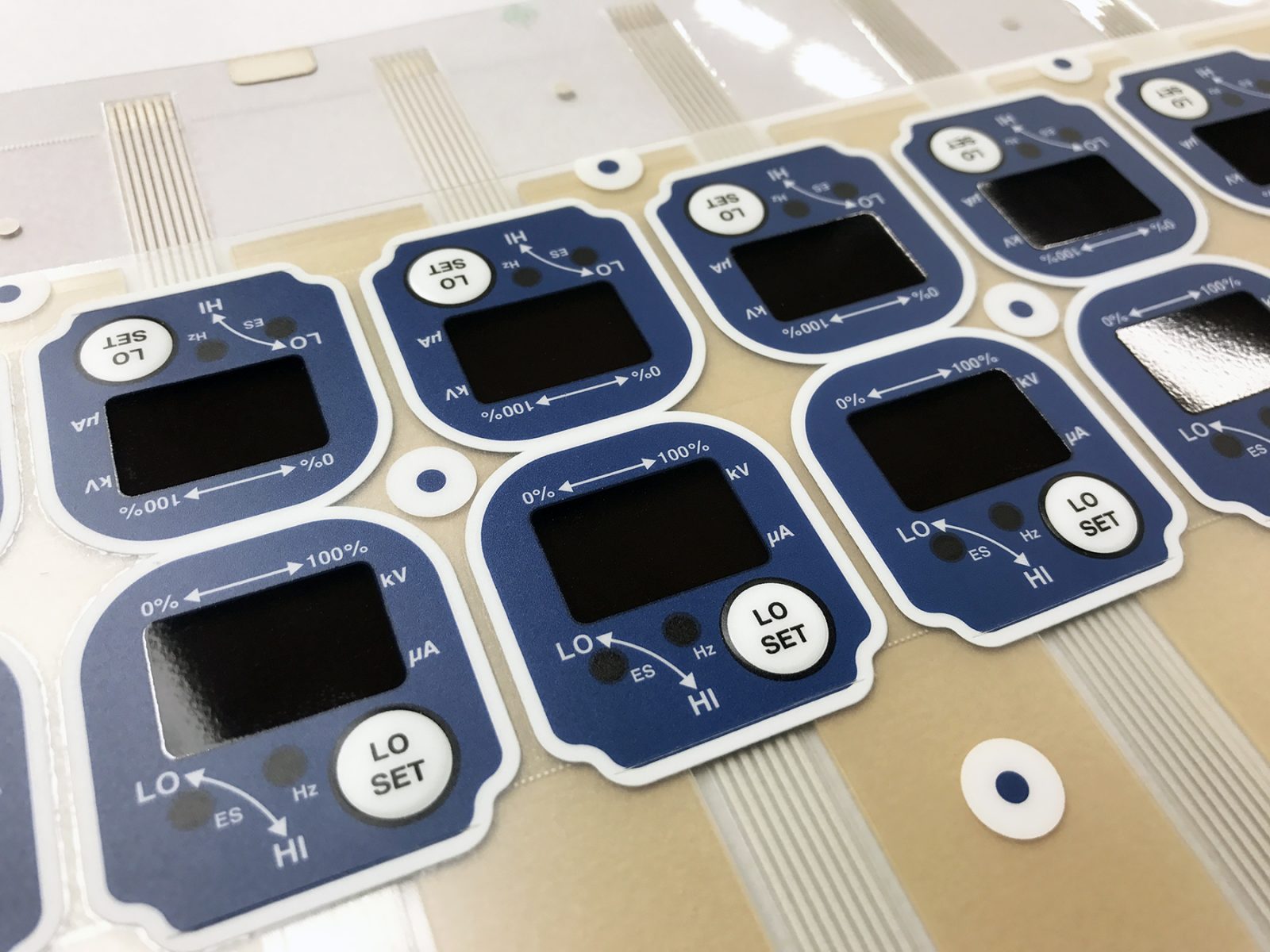Exactly How Membrane Layer Switches Add To the Longevity of Electronic Control Panels
Membrane switches play an essential role in enhancing the sturdiness of electronic control panels, largely via their multi-layered construction which provides efficient security against environmental elements such as dampness and dirt. The absence of moving components dramatically reduces the possibility of mechanical failures, making membrane switches perfect for requiring applications.
Meaning of Membrane Layer Switches

Membrane buttons are developed to be thin and light-weight, making them appropriate for applications where space is limited. They can be made in various forms, sizes, and shades, using adaptability in style that satisfies visual and functional requirements. Additionally, membrane buttons can incorporate different innovations, such as responsive responses and LED indications, improving individual experience.
Due to their construction, membrane layer switches are often resistant to dust, dampness, and general wear, adding to their toughness sought after settings. Their seamless layout not just promotes simple cleaning yet also decreases the danger of mechanical failure, making them a recommended option for producers looking for reputable interface in their digital control panels.
Protection Versus Environmental Aspects
The style of membrane switches over inherently supplies a degree of defense against numerous environmental elements, which is crucial for maintaining performance in challenging conditions - Membrane Switch. These switches are typically built with layers of adaptable products that secure inner parts from moisture, dust, and contaminants. By encapsulating the wiring, membrane layer changes reduce the risk of brief circuits and rust, which can considerably harm performance
In addition, using robust adhesives and sealers during manufacturing enhances their resistance to environmental obstacles. Membrane switches can endure direct exposure to chemicals and solvents, making them ideal for industries such as food handling and medical care, where health and cleanliness are vital. Their smooth surface layout likewise avoids the accumulation of dirt and germs, assisting in easier cleaning and maintenance.
Temperature fluctuations are another ecological issue, and membrane buttons are engineered to function efficiently throughout a vast array of temperature levels (Membrane Switch). This versatility ensures that control board remain functional in different setups, from industrial settings to consumer advice electronic devices
Effect On Customer Interaction
User communication with digital visit this site control panels is considerably affected by the style and functionality of membrane layer switches. These buttons offer a tactile interface that improves the overall customer experience, permitting for user-friendly navigation and control. Their responsive nature makes sure that users get immediate responses upon activation, which is vital for jobs needing precision and efficiency.
Furthermore, the smooth surface area of membrane changes facilitates easy cleansing and upkeep, advertising individual confidence in the dependability of the user interface. This sanitation is especially vital in atmospheres where health is extremely important, such as clinical or food processing settings. Furthermore, the compact and light-weight style of membrane layer switches over adds to the visual charm of control panels, urging user interaction with a modern-day and sleek appearance.
Furthermore, the integration of visual aspects, such as printed icons and backlighting, aids users rapidly recognize features, decreasing the learning curve connected with brand-new equipment. Because of this, users can run tools better, leading to boosted productivity and fulfillment. In recap, membrane buttons play a critical function in improving user interaction by integrating performance, looks, and ease of use, eventually causing improved functional effectiveness.
Design Flexibility and Customization
Layout flexibility and customization are crucial elements of membrane switches, enabling manufacturers to customize digital control panels to specific applications and user requirements. This adaptability permits for the combination of different layout components, such as shades, graphics, and appearances, which can enhance the aesthetic appeal and individual involvement of the control board.
Membrane a knockout post layer buttons can be customized in dimension and form, suiting a large range of gadgets and applications, from industrial machinery to consumer electronics. This flexibility makes certain that suppliers can produce user-friendly user interfaces that line up with user assumptions and functional requirements. Additionally, the capability to incorporate distinct functions such as backlighting or responsive feedback better enhances functionality, enabling a more interactive experience.
Additionally, the production process for membrane changes sustains the fast prototyping of designs, allowing suppliers to repeat and improve their principles rapidly. This capacity not only speeds up the advancement timeline but also guarantees that the end product meets details practical and visual standards.

Cost-Effectiveness and Longevity
Cost-effectiveness and long life are substantial advantages of membrane layer buttons, making them an attractive choice for suppliers and end-users alike. These buttons are typically less expensive to produce than traditional mechanical switches, largely due to their simplified manufacturing processes and the reduced number of parts called for. This expense benefit extends not only to preliminary manufacturing however likewise to long-lasting operational expenditures, as membrane switches frequently need less upkeep and have a lower failure price.
Additionally, the long life of membrane layer switches adds to their total value. Constructed from sturdy materials, they are immune to environmental elements such as moisture, dust, and chemicals, which can bring about early wear in other button kinds. The absence of moving parts lessens mechanical failure, enabling membrane changes to keep functionality over prolonged periods.
This longevity is specifically helpful in applications needing regular efficiency under demanding problems, such as clinical devices and commercial tools. Ultimately, the combination of cost-effectiveness and durability makes membrane switches a financially viable option for manufacturers, supplying trustworthy services that endure the test of time while optimizing budgetary factors to consider.
Verdict
In conclusion, membrane buttons dramatically boost the sturdiness of electronic control panels through their durable building and construction and safety attributes - Membrane Switch. Generally, membrane layer changes represent a trusted and cost-efficient choice for boosting the longevity and functionality of electronic control systems.
Comments on “Just How a Membrane Switch Improves Individual Experience and Gadget Efficiency”